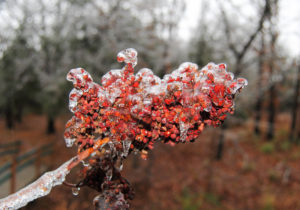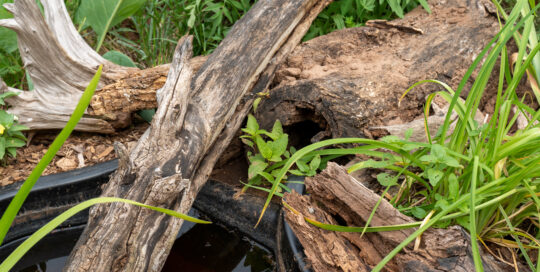Sumac is great for wildlife gardens
Views: 1082

In fall, I love seeing the blazing red leaves of sumac stands along country roadsides in my state. I rarely see sumac offered at plant nurseries locally, but it can be a great addition to the landscape if you can find cultivars or have access to other sources. Sumac is especially great for wildlife gardens.
Sumac basics
Sumacs are members of the Anacardiaceae family, in the genus Rhus. Several species are native to North America, with a few of those cultivated for gardens. In general, they are tough and relatively easy to grow. Often, they are drought tolerant and unfussy about soil type as long as their roots don’t stay wet. They range in size from small shrubs to tall trees. Most spread primarily by rhizomes, forming small thickets. Sumac plants are dioecious, meaning their flowers have a single sex, male or female. Only female plants produce fruit.
Common varieties
Here are some sumac varieties that are commonly used in landscaping:
- Staghorn (Rhus typhina) grows tall, up to 30 feet, and has been cultivated for its red/maroon fall foliage and velvety red berries.
- Winged (Rhus copallinum) is a large deciduous shrub or small tree. One cultivar, “Prairie Flame Shining Sumac,” is a dwarf variety, more suitable for smaller landscapes.
- Smooth (Rhus glabra) is a 10-20 foot shrub that forms colonies. Its range extends further west than staghorn sumac, though its appearance is very similar. It is well suited to sandy and/or rocky soils.
- Fragrant (Rhus aromatica) grows in dense, shrubby colonies, suitable for forming hedges up to 5 feet tall.
Why is sumac good for wildlife?
Native sumac provides food and shelter for birds, deer, and a variety of animals and insects. While the berries may not be the preferred snacks for most animals, birds will eat them when food is hard to find over winter. The foliage is host to hairstreak butterflies (different species of sumac for different species of hairstreaks).
A simple sumac “lemonade” recipe
Clip smooth or winged sumac berries just after they turn red and have a cover of sticky white coating. Rain washes away this coating so timing is important. Clip the heads apart and only put enough water to cover the berries. Ideally, leave overnight. Agitate to break up the heads and strain. Dilute and add sweetener to taste. You can also make a hard cider by adding sugar and cider yeast to the mixture and allowing it to ferment.
Poison sumac isn’t classified in the Rhus genus anymore
Poison sumac (Toxicodendron vernix) is no longer classified in the Rhus genus. Instead, it is grouped with poison ivy and poison oak and, like them, it is toxic. Poison sumac has white or light-green berries, rather than red. Before making sumac lemonade, be certain you know the difference between Rhus and Toxicodendron species, especially in areas where both may occur!
Meet Leslie Miller
Leslie Ann Miller shares 3.5 acres in rural Oklahoma with birds, butterflies and wide variety of animals. She is currently transforming her yard with plantings…
Leslie's Recent Posts

Creating microclimates and microhabitats to benefit wildlife






